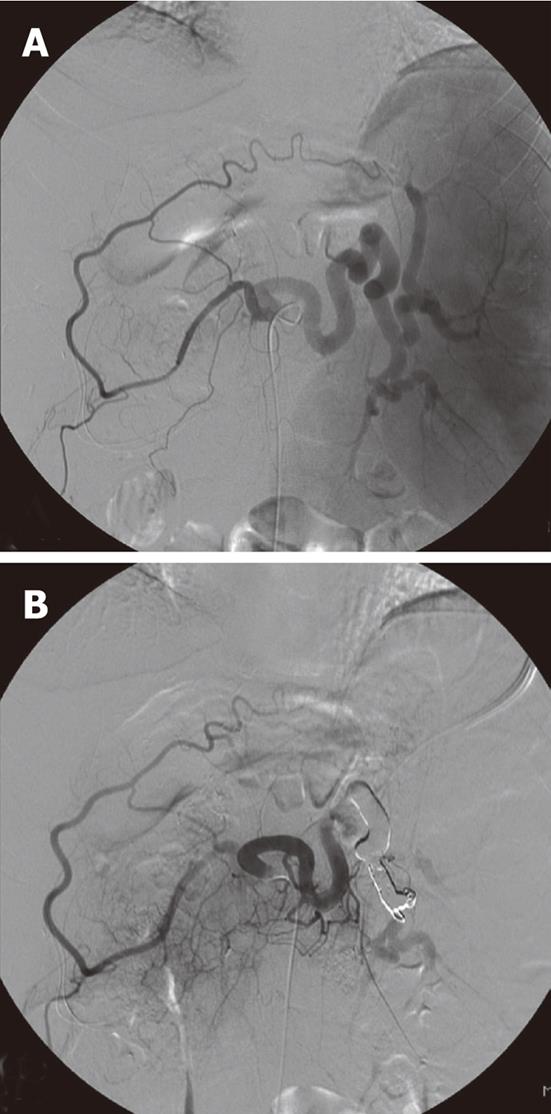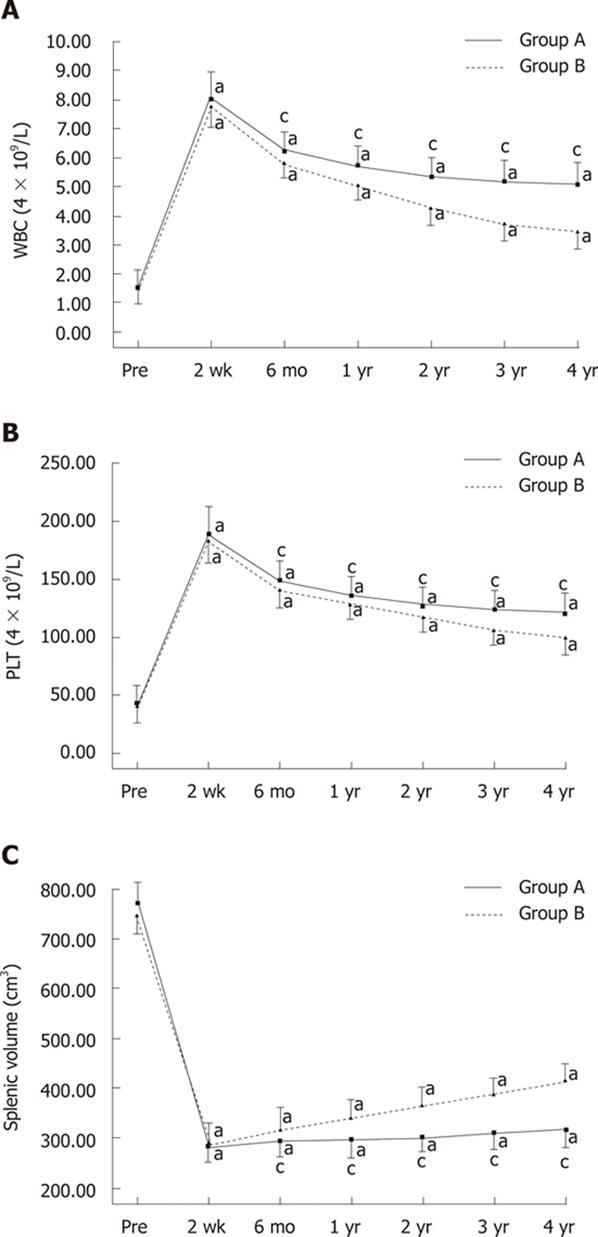Copyright
©2012 Baishideng Publishing Group Co.
World J Gastroenterol. Jun 28, 2012; 18(24): 3138-3144
Published online Jun 28, 2012. doi: 10.3748/wjg.v18.i24.3138
Published online Jun 28, 2012. doi: 10.3748/wjg.v18.i24.3138
Figure 1 Hypersplenism in a 76 year old man with hepatitis B virus-related cirrhosis.
A: Celiac digital subtraction arteriogram. The splenic artery is markedly dilated and tortuous. The spleen is enlarged. The right gastroepiploic artery arises from the celiac axis; B: Celiac arteriogram after coil embolization of the distal splenic artery and its primary branches. The hilar splenic arterial branches are faintly filled by collateral circulation.
Figure 2 Computed tomographic angiography, arterial phases, before and after splenic artery embolization in the same patient as Figure 1.
A: Before embolization the spleen is enlarged; B: One month after embolization the major portion of the spleen is avascular with minute areas of low attenuation representing residual gas collection. A small part of the spleen was perfused with contrast medium; C: Six months after embolization the low attenuation area has decreased in size; D: One year later the low attenuation area has further decreased in size; E: Two years later the necrotic area has further decreased in size; F: Four years later no significant change is seen.
Figure 3 Curves of the white blood cell counts, platelet counts, and splenic volume in cirrhotic patients of group A (total splenic artery embolization) and group B (partial splenic embolization) before embolization and at the different follow-up time intervals.
A: Curves of long-term follow-up of white blood cell counts between the two groups; B: Curves of long-term follow-up of platelet counts between the two groups; C: Curves of long-term follow-up of splenic volume between the two groups. All values are expressed as mean ± SD. aP < 0.05 vs pre-embolization within each group; cP < 0. 05 group A vs group B at each time point determined with the Mann-Whitney test. WBC: White blood cell; PLT: Platelet.
- Citation: He XH, Gu JJ, Li WT, Peng WJ, Li GD, Wang SP, Xu LC, Ji J. Comparison of total splenic artery embolization and partial splenic embolization for hypersplenism. World J Gastroenterol 2012; 18(24): 3138-3144
- URL: https://www.wjgnet.com/1007-9327/full/v18/i24/3138.htm
- DOI: https://dx.doi.org/10.3748/wjg.v18.i24.3138











